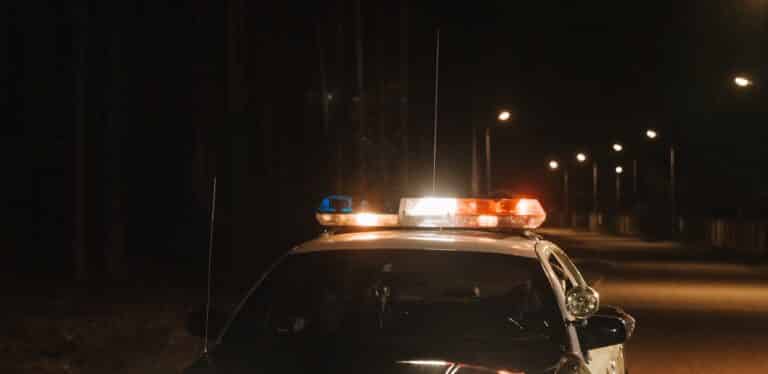
El Instituto Internacional de Prensa ‒IPI, por sus siglas en inglés‒ y el Apoyo de los medios de comunicación internacionales ‒IMS‒ reconocieron a la periodista mexicana Carmen Aristegui con el premio Héroe Mundial de la Libertad de Prensa 2023, debido a su «compromiso con el periodismo crítico frente a los esfuerzos dirigidos a silenciarla».
El premio, «honra las décadas de Aristegui de reportajes intrépidos sobre la corrupción en México, independientemente del gobierno en el poder», precisaron las organizaciones en un comunicado.
Por su vigoroso periodismo de vigilancia, las organizaciones señalaron que Aristegui ha sido objeto de una variedad de abusos a manos del estado mexicano y otros actores poderosos, incluidas campañas de difamación y despidos por motivos políticos.
«Ella y su familia fueron objetivo ilegal de la vigilancia de Pegasus a partir de 2015, en uno de los primeros usos conocidos del poderoso software espía contra periodistas».
En ese sentido, apuntaron que, a pesar de trabajar bajo amenazas en uno de los países más peligrosos del mundo para el periodismo ‒México‒, Aristegui nunca ha vacilado en su misión periodística, «mientras que su fortaleza le ha valido el respeto generalizado e inspiró a una generación como una destacada reportera de investigación en la industria de los medios dominada por hombres en México».
A ello, sumaron que, en un país donde el discurso político polarizado y la desinformación van en aumento, y donde un periodista o medio de comunicación es atacado cada 13 horas, el periodismo independiente, como el que practica y representa Aristegui, no solo es necesario sino también un elemento clave de democracia.
El premio IPI-IMS World Press Freedom Hero se entregará junto con el premio IPI-IMS Free Media Pioneer durante una ceremonia especial este 25 de mayo en Viena como parte del Congreso Mundial anual de IPI.
A thorn in the side of power
Aristegui ha pasado casi tres décadas publicando historias importantes sobre la corrupción de alto nivel en México, trabajando principalmente en radio y televisión, incluida CNN en español. Su trabajo se distingue por una voluntad inquebrantable de arrojar una luz crítica sobre algunas de las instituciones más poderosas de México, a pesar de los riesgos que conlleva tal información.
«De hecho, su periodismo ha sido en repetidas ocasiones una espina clavada en el costado de quienes están en el poder, convirtiéndola con frecuencia en blanco de represalias»
En 2015, Aristegui fue despedida de la emisora de radio MVS poco después de que ella y su equipo informaran sobre un dudoso negocio inmobiliario de la esposa del entonces presidente Enrique Peña Nieto y después de que ayudara a lanzar MexicoLeaks, una plataforma al estilo de Wikileaks diseñada para ayudar exponer la corrupción.
Se consideró que el despido tenía motivaciones políticas y un tribunal lo declaró ilegal más tarde. Había sido despedida una vez antes de su cargo en MVS bajo la presión de la administración del expresidente Felipe Calderón, antes de ser recontratada después de una protesta pública.
Dos años después, un grupo de organizaciones mexicanas de derechos humanos publicó un informe que revelaba que Aristegui había sido objeto de vigilancia utilizando el poderoso software espía Pegasus en 2015 y 2016. La vigilancia también se centró en su hijo Emilio, que entonces tenía 16 años, así como en dos colegas; También se creía que su hermana, una productora y una ex asistente eran objetivos sospechosos.
Después de su segundo despido de MVS, Aristegui continuó transmitiendo en CNN en español y fundó un medio de comunicación llamado Aristegui Noticias, donde continúa produciendo cobertura de investigación contundente sobre la élite gobernante de México.
En respuesta, Aristegui ha sido blanco de repetidos ataques verbales e intentos de difamación por parte del presidente Andrés Manuel López Obrador, quien regularmente utiliza sus ruedas de prensa para arremeter contra los enemigos percibidos en los medios y la sociedad civil.
«Carmen Aristegui se destaca por su valiente determinación de decir la verdad al poder, a pesar de los riesgos que ello conlleva en un país como México, uno de los lugares más peligrosos del mundo para ejercer el periodismo. A lo largo de su carrera, ha hecho lo que hacen los mejores periodistas de investigación: actuar como perro guardián de los poderosos y dar voz a los débiles», refirió el director ejecutivo del IPI, Frane Maroević.
«Por este trabajo ha enfrentado reiteradas agresiones, hostigamientos y violaciones a sus derechos humanos. Sin embargo, una y otra vez ha respondido a este acoso redoblando su compromiso con el periodismo crítico, negándose a ser silenciada. Estamos orgullosos de otorgarle el premio IPI-IMS World Press Freedom Hero de este año», agregó.
Por su parte, el director ejecutivo de IMS, Jesper Højberg, subrayó que «durante más de tres décadas, Carmen Aristegui ha estado a la vanguardia de llevar información veraz al público en México. Su dedicación al periodismo y la persistencia en su trabajo sirven de inspiración a los periodistas de todo el mundo, pero en particular en América Latina, donde la libertad de prensa y la seguridad de los periodistas se encuentran, lamentablemente, bajo una fuerte presión».
A ello sumó que, a lo largo de su trabajo, la integridad de la información se ha mantenido como un pilar central.
«Esto no solo conduce al buen periodismo, sino que también es clave para defender los valores democráticos. Al denunciar la corrupción y buscar la rendición de cuentas, Carmen Aristegui ha continuado con valentía e implacablemente sus informes a pesar de las amenazas que ha enfrentado, y es difícil sobrestimar el impacto de su trabajo. Por eso, Carmen Aristegui es una verdadera Héroe de la Libertad de Prensa».
Los ganadores del premio Hero de este año fueron seleccionados por un jurado internacional compuesto por IPI; SOY S; Siddharth Varadarajan, editor en jefe de The Wire de India, que recibió el Premio Free Media Pioneer de 2021; Iryna Vidanava, cofundadora y directora ejecutiva de CityDog.io, un medio de comunicación en línea independiente líder en Bielorrusia; y José Zamora, director de comunicaciones e impacto de Exile Content, e hijo del encarcelado héroe mundial de la libertad de prensa del IPI-IMS, José Rubén Zamora.
El premio Héroe de la Libertad de Prensa Mundial 2022 fue otorgado a Shireen Abu Akleh, una figura pionera para las mujeres en los medios en el Medio Oriente y corresponsal de Al Jazeera que fue asesinada a tiros por las fuerzas israelíes en mayo de 2022, y Carlos Dada de El Salvador, cofundador y director de El Faro, uno de los medios de noticias de investigación en línea más destacados de América Latina.
Esta es la segunda ocasión en que una periodista mexicana recibe la distinción, luego de que en 2010, Lidia Cacho Ribeiro fuera reconocida en 2010.
You may be interested in: Mexican activists and organizations seek to advance the peace agenda with the US.

















